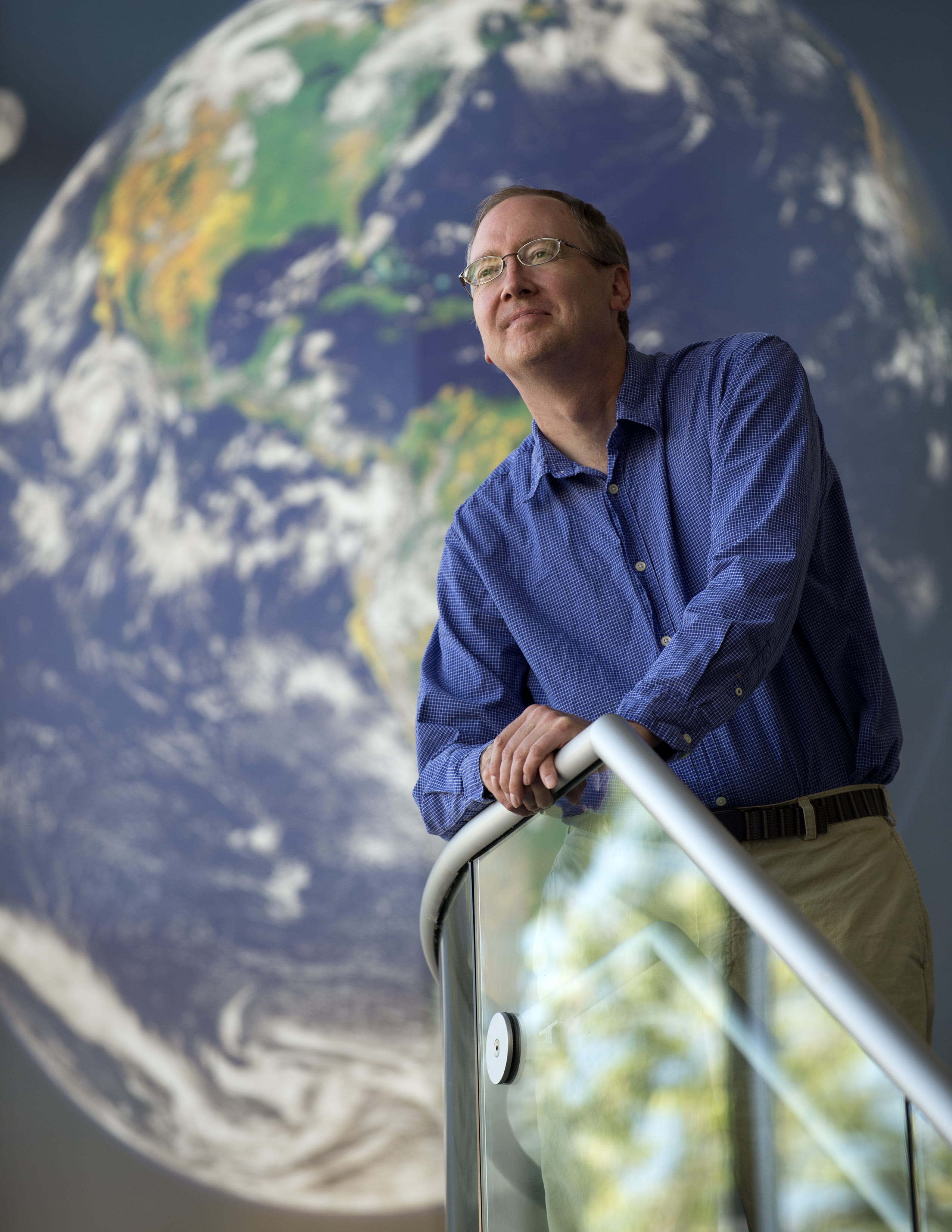Scientists project a drier Amazon and wetter Indonesia in the future
UCI-led study examines role of plants, trees in global transfer of rainfall

Irvine, Calif., April 27, 2018 – Climate models predict that an increase in greenhouse gases will dry out the Amazon rainforest in the future while causing wetter conditions in the woodlands of Africa and Indonesia. Researchers at the University of California, Irvine and other institutions have identified an unexpected but major factor in this worldwide precipitation shift: the direct response of the forests themselves to higher levels of carbon dioxide.
“People tend to think that most of the disruption will come from heat going into the oceans, which, in turn, will alter wind patterns,” said James Randerson, UCI’s Ralph J. & Carol M. Cicerone Chair in Earth System Science. “We have found that large-scale changes in rainfall can, in part, be attributed to the way tropical forests respond to the overabundance of carbon dioxide humans are emitting into the atmosphere, particularly over dense forests in the Amazon and across Asia.”
A new study led by former UCI postdoctoral scholar Gabriel Kooperman and published today in Nature Climate Change, demonstrates that interactions between rainforests and rising CO2 levels will contribute to an asymmetrical pattern of rainfall change across the tropics.
In many aspects of Earth system science, the local effects of environmental factors can impact faraway regions through their influence on the circulation and movement of moisture within the atmosphere. The UCI-led group predict a similar cascade of events, beginning with stomata, small structures on the underside of leaves that open and shut in order for plants to take in the CO2 they need to grow – and that also release water vapor.
When more CO2 is present, these orifices do not open as widely, which reduces the amount of water evaporated into the atmosphere. According to the researchers, this small process at the plant level, multiplied across the rainforest, will cause changes in the atmosphere, affecting the way winds blow and the flow of moisture coming from the ocean.
“In many tropical forest regions, the moisture supplied by transpiration, which connects water underground at the root level directly to the atmosphere as it is pulled up to the leaves, can contribute as much as moisture evaporated from the ocean that rains back down at a given location – which is normal rainforest recycling,” said Kooperman, now an assistant professor of geography and atmospheric sciences at the University of Georgia.
“But with higher CO2, trees and forests evaporate less moisture into the air, so fewer clouds are formed above the Amazon,” he said. “And rather than [joining with the usually abundant clouds and] raining over the forest, water vapor from the Atlantic Ocean blows across the South American continent to the Andes mountain range, where it comes down as rain on the mountain slopes, with limited benefit to the rainforest in the Amazon basin.”
This recipe for drought in South America is unique to the Amazon and distinctly different from an increase in rainfall predicted over forests in Central Africa and the Maritime Continent, a vast area between the Pacific and Indian oceans that includes Malaysia, Papua New Guinea and the heavily populated Indonesian archipelago.
Randerson said that the reduction in evaporation will lead to warming over the forests on islands such as Borneo, Java and Sumatra, which are surrounded by humid air above warm ocean surfaces. “You’ll get a stronger contrast in heating over the islands compared to the nearby ocean, and so it will enhance a natural ocean-land breeze, pulling in more moisture from these neighboring ocean systems to increase rainfall over the forests,” he said.
The research project, which used a combination of standard simulations provided through the Coupled Model Intercomparison Project Phase 5 and simulations with the state-of-the-art Community Earth System Model, revealed that the response of tropical vegetation to higher CO2 can be an important driver of climate change in the tropics, according to Kooperman.
He also highlighted the fact that the resulting droughts and forest mortality in the Amazon and a potential increase in flooding in other rainforests may have an impact on biodiversity, freshwater availability and food supplies for economically vulnerable populations.
This study was supported by the Gordon and Betty Moore Foundation and the U.S. Department of Energy and involved researchers from Oak Ridge National Laboratory; the University of Tennessee, Knoxville; Lawrence Berkeley National Laboratory; the National Center for Atmospheric Research; and the University of Washington.
About the University of California, Irvine: Founded in 1965, UCI is the youngest member of the prestigious Association of American Universities. The campus has produced three Nobel laureates and is known for its academic achievement, premier research, innovation and anteater mascot. Led by Chancellor Howard Gillman, UCI has more than 30,000 students and offers 192 degree programs. It’s located in one of the world’s safest and most economically vibrant communities and is Orange County’s second-largest employer, contributing $5 billion annually to the local economy. For more on UCI, visit www.uci.edu.
Media access: Radio programs/stations may, for a fee, use an on-campus ISDN line to interview UCI faculty and experts, subject to availability and university approval. For more UCI news, visit wp.communications.uci.edu. Additional resources for journalists may be found at communications.uci.edu/for-journalists.